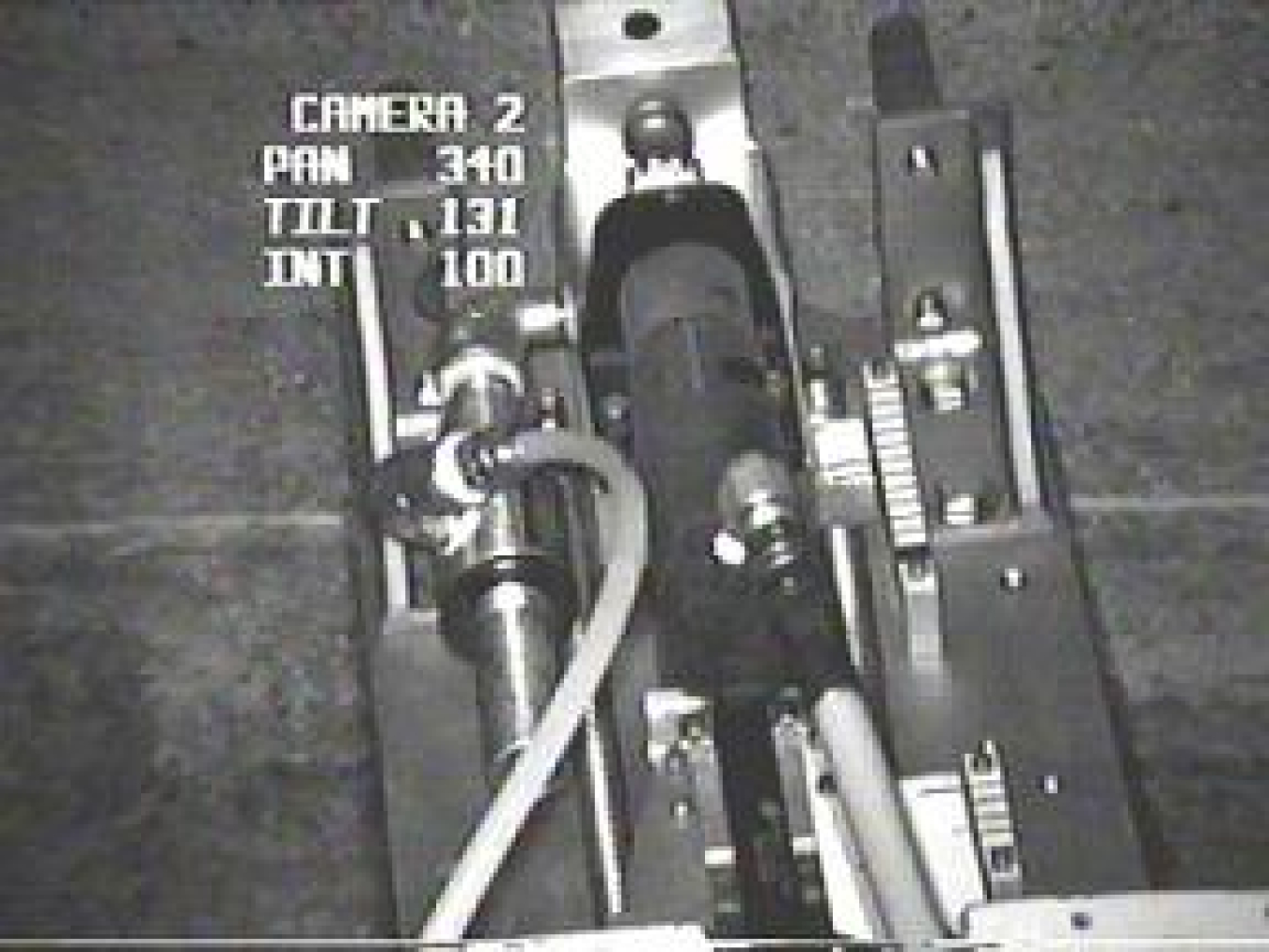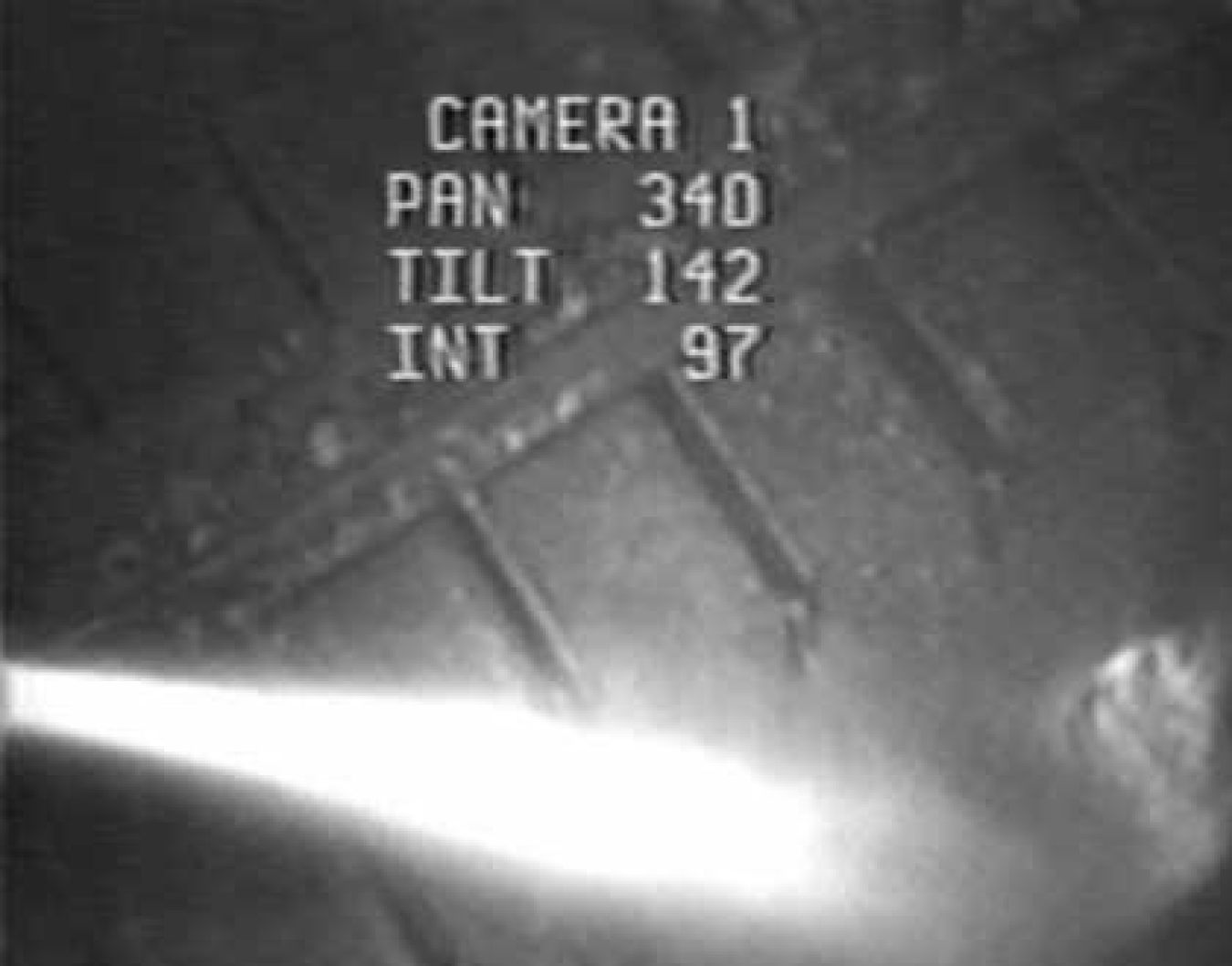Liquid high-level waste (HLW) processing has been completed. The underground waste tanks will be closed following decisions on long-term site management (Phase 2 Decision). Greater than 98 percent of the long-live radioactivity has been removed from the tanks and vitrified (solidified in a glass matrix). In 2000, the amount of long-lived radioactivity remaining in the tanks was quantified and additional cleaning activities were undertaken such that the remaining activity was of sufficiently low concentration so that closure of the Waste Tank Farm could occur.
Liquid High-Level Waste Residual Characterization
Characterization sampling activities included the use of several technologies to get an accurate picture of what was remaining in the tank.
Technologies used include:
- Deployment of neutron track recorders within the tank measured neutron fluxes from many reactions within the tank down to the levels of cosmic ray-induced background.
- Deployment of a special camera within the tank measured two dimensional spatial mapping of gamma ray emitting radiation in real time.
- Deployment of a burnishing sampler within the tank allowed samples to be collected from the walls, columns, and other vertical and horizontal surfaces of the tank for radiochemical analysis.

Burnishing Sampler
Burnishing Sampler. The approach for characterization of the waste in Tank 8D-2 used direct measurement techniques (i.e., burnishing samples) in combination with indirect technologies such as the gamma camera and neutron track recorders. Data resulting from the tank characterization activities was evaluated and used to update the radioactive quantification inventory for Tank 8D-2 in late summer 2001.

High Pressure Sluicer
High Pressure Sluicer
Following characterization activities, preparations were made to help remove the fixed radioactivity that was bound to the wall of Tank 8D-2. In March 2001, two mechanical sluicer's (high-pressure sprayers) were deployed in the tank. The sluicers were placed in risers (openings in the top of the tank) on opposite sides of the tank. A submersible pump was used to force liquid from the bottom of the tank into a spray assembly where it was directed at tank surface locations at a force of 100 pounds per square inch. The liquid sprayed from the sluicers removed fixed radioactivity on the surface of the tank walls.
High-Level Waste Tank Closure Project
All retrievable HLW has been removed from the tank. In 2004 treatment of the low activity sodium-bearing wastewater was also completed. The HLW Tanks have been placed into a safe surveillance and maintenance mode.
In 2010, a Tank and Vault Drying System (T&VDS) was installed to prevent the underground carbon steel waste tanks from corroding under ambient tank and vault conditions. The T&VDS is a dehumidifying (air drying) system designed to reduce the liquid volumes in both the tanks and the vaults, and thereby the harmful effects of corrosion.
The T&VDS provides dehumidified air to the tank ventilation system to maintain a dry state, (i.e., less than 30% relative humidity). The system achieved the following results by calendar year (CY) 2014:
- Dry conditions in tanks 8D-1 and 8D-2, and in the tank 8D-1 and tank 8D-2 vaults and pans;
- Dry conditions in tank 8D-3;
- Reduced the liquid level in tank 8D-4; and
- Dry condition in the 8D-3/8D-4 vault.
The T&VDS operations continue to be monitored to reduce air infiltration and individual air flows are adjusted to maintain a target <30% Relative Humidity (RH), further reducing the corrosion rate.
The system has the capability to maintain the tanks and vaults in a dry state for 30 years. It was able to quickly dry the air from 90% RH to 30% RH within a matter of hours in tanks 8D-1 and 8D-2 after all liquid in the bottom was evaporated.
Some liquid remain in tank 8D-4. The final disposition of this residual waste is pending DOE evaluation of liquid waste management alternatives.

